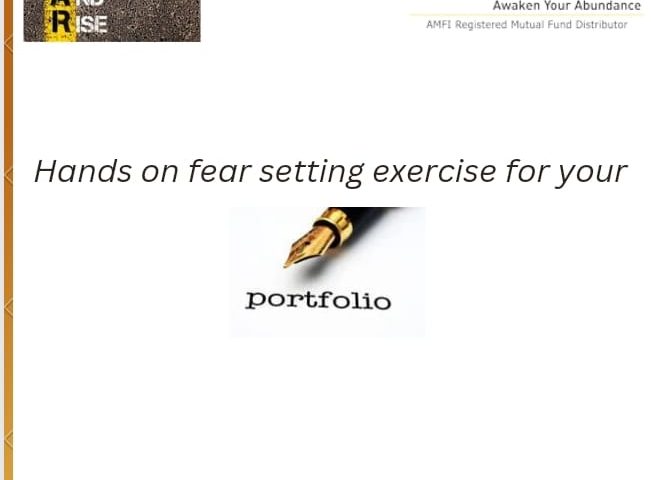Writing down our worst possible fears for the tasks we are undertaking can help us tremendously. Once we articulate our worst possible fears and anxieties, it becomes relatively easier to deal with any situation.
In most of the cases, one would find that the real risk is much lower than the perceived risk.
Doing this exercise for our investment portfolio can also prepare us for future and will not catch us off guard-
Fear #1 How much it can fall-
Markets have plummeted by as much as 50-60% in the past. There is no reason it could not happen again in the future. Simply assuming that what had happened in 1992, 2000,2008, 2020 etc can’t get repeated again in 2023 or in future is a folly. Let’s prepare yourselves mentally for any such eventuality. Can you deal with such a situation? How much investment are you willing to put in such risk? What will be the impact in your life, psychologically? How would it impact your financial goals?
Fear #2 What if you make a conservative portfolio and it underperforms compare to the market-
Making a conservative portfolio carries the risk of underperformance. What will be your reaction if it underperforms? What will be its impact on you psychologically? Also by not taking requisite risk, are you not running the prospect of not able to meet your financial goals? Which trade-off is better for you?
Fear#3 What if your portfolio underperforms the market despite taking similar risk-
There may be a possibility that your chosen funds have underperformed the market, sometimes quite significantly. Look at your funds- Maybe you have selected the funds based on past return and now it’s their turn to perform below the mean return. Would you prefer to wait for them to outperform? If they are not outrightly bad funds, they are likely to outperform sooner or later. But the question is 1) Are you willing to wait that uncertainty knowing your wait could be much longer 2) Will you absorb this volatility compared to the market or better off investing in funds that track the market i.e. index funds ?
But, setting your worst fear is only one side of the coin without considering the cost of inaction. So, here are the likely cost of not taking action on investments-
1) Cost of not benefitting the compounding benefit- Despite so much market volatility, the market has delivered 17% compounding return in the last 40 years. Is this not a great loss if you keep the money in the bank or spend it all.
2) Cost of not achieving your financial goals- How will you handle your financial goals like retirement, children’s’ education, going to exotic vacations, buying your dream home etc without investing in high return avenues?
3) Cost of inflation- Keeping money in the bank is not even covering the inflation. Moreover bank return is highly taxable. Have you considered the silent yet heavy cost of inflation and taxation?
4) Cost of delaying your investments- Every year’s delay costs almost 5 years of your retirement corpus. Can you afford this delay?
The chances are that you may like to do investments with-
1) 50% Equity portfolio
2) 10% Gold Portfolio
3) 40% Debt portfolio
Further, you may like to invest in-
1) Mostly in index funds including international index funds. This will relieve your worry of underperformance compared to the market.
2) Funds with demonstrable track record of maintaining higher return than the index.
3) You may like to focus on low PE funds ( also called value funds) with excellent fund management skills and processes.
4) Almost zero risk debt funds like high AAA bond funds and G Sec funds
5) Gold ETFs
Writing down your investment related worries and the cost of inaction may greatly help you select the portfolio construct that is suitable for you. This little exercise may make it a pretty hassle free investment experience for you.
Disclaimer- Above mentioned asset allocation is just for illustration purpose. It is not an investment advice. Your portfolio depends on your unique situations and financial goals.
Manoj Pandey
CFP





